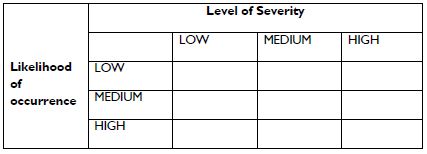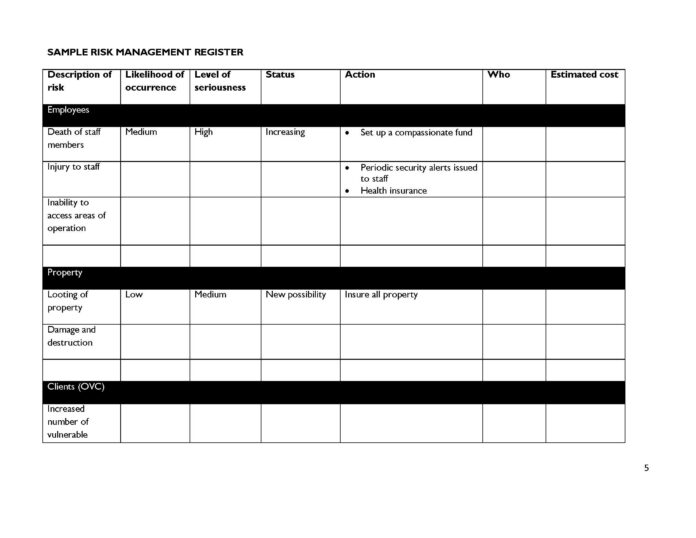Free Sample Risk Management Plan PDF
We shall define risk in this context as the possibility that something harmful or undesirable may happen. This could include harm, injury, or abuse to your organization’s clients, volunteers, board members, employees, property, or reputation.
Risk management is therefore the procedure that an organization follows to protect itself, its staff, clients, and volunteers. This is an ongoing process. Remember that it is not possible to eliminate all risks. Your responsibility is to demonstrate that you have recognized the risks you could face and have taken reasonable precautions to prevent them from causing harm to your clients’ volunteers, board members, employees, property, or reputation.
This guideline has been developed to help organizations design and implement an effective and proactive risk management plan in response to the circumstances we face in this country because of post-election violence. This process will help management recognize the risks it is facing, perform risk assessments, and develop strategies to mitigate risks using management resources available to them.
key steps in the risk management process
Step One: Establish your context
Identify, assess, and document potential risks. This involves mapping the following:
- Social scope of risk management (what are your stakeholders facing)
- The identity and objectives of stakeholders (do you want to ensure minimal financial impact, programmatic impact, etc.)
- What resources are available to us to help mitigate the effects of the risks
- What structures do we have in place to cope with the scenarios that could present themselves?
Step Two: Identification of possible risks
Instead of looking at the problem at hand, consider the causes of the problems you might face. The source of the risk should not be ignored but because we face a national problem, we can only effectively address the problems that are presented to us at the grantee level.
This means that grantees should look at the threats that they are facing, such as losing money, accidents, casualties, loss of staff, loss of property, etc. It is helpful to classify the possible risks according to categories, such as
- Risks to general operations
- Personnel; program beneficiaries
- Property, building, and equipment
- Perpetuation.
Step Three: Assessment
Once risks have been identified, they must be assessed for potential severity of loss and probability of occurrence. These quantities can be either simple to measure, in the case of the value of a lost building, or impossible to know for sure, in the case of the probability of an unlikely event occurring. This is why, in the assessment process, it is critical to make the best guesses possible in order to properly prioritize.
Once risks have been identified, they must be assessed for potential severity of loss and probability of occurrence. These quantities can be either simple to measure, in the case of the value of a lost building, or impossible to know for sure, in the case of the probability of an unlikely event occurring. This is why, in the assessment process, it is critical to make the best guesses possible in order to properly prioritize.
Table 1: Sample risk matrix for grading risks
This will help you prioritize the risks as well as allocate resources appropriately.

Step Four: Potential risk treatments- how will you manage the risk?
Once the risks have been identified, it is important to outline the courses of action to address these. Possible scenario/solutions:
- Avoidance (elimination): Includes not performing risky activities, changing the travel routes, avoiding areas deemed unsafe, etc.
- Reduction (mitigation): Involves methods that reduce the severity of the loss equipping staff with health and safety kits, keeping emergency numbers, and fire equipment, backing up files, etc.
- Retention: Involves accepting the loss when it occurs.
- Transfer: This means causing another party to accept the risk. This can be typically done through insurance, outsourcing services, etc.
These strategies work best when combined.
Step Five: Create a risk management plan
Select appropriate controls or countermeasures to measure each risk. The mitigation needs to be approved by the appropriate level of management.
Step Six: Implementation
Follow all the planned methods for mitigating the effect of the risks.
Step Seven: Evaluate and review
Initial plans are never perfect or wholly effective. Experience and change in circumstances will necessitate changes in the plan and contribute information to allow different decisions to be made depending on the risk being faced.


